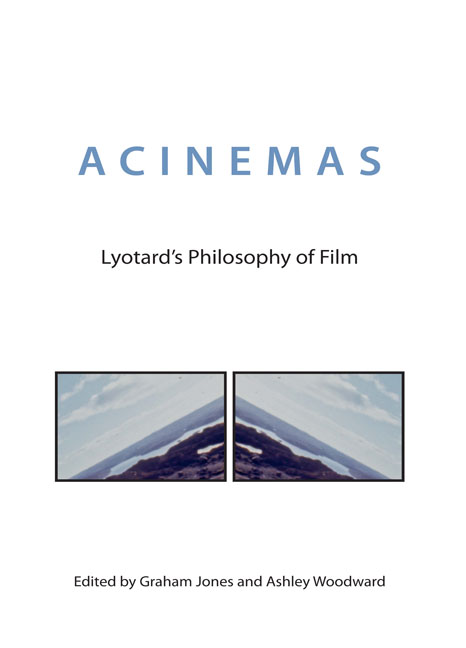Book contents
- Frontmatter
- Contents
- Acknowledgements
- Abbreviations
- Translators’ Note
- I Openings
- II Lyotard's Essays on Film
- III Approaches and Interpretations
- IV Applications and Extensions
- 11 Discourse, Figure, Suture: Lyotard and Cinematic Space
- 12 On Dialogue as Performative Art Criticism
- 13 Give Me a Sign: An Anxious Exploration of Performance on Film, Under Lyotard's Shadow
- 14 How Desire Works: A Lyotardian Lynch
- 15 Aberrant Movement and Somatography in the Hysterical Comedies of Roméo Bosetti
- Appendices
- Notes on Contributors
- Index
12 - On Dialogue as Performative Art Criticism
from IV - Applications and Extensions
Published online by Cambridge University Press: 23 June 2018
- Frontmatter
- Contents
- Acknowledgements
- Abbreviations
- Translators’ Note
- I Openings
- II Lyotard's Essays on Film
- III Approaches and Interpretations
- IV Applications and Extensions
- 11 Discourse, Figure, Suture: Lyotard and Cinematic Space
- 12 On Dialogue as Performative Art Criticism
- 13 Give Me a Sign: An Anxious Exploration of Performance on Film, Under Lyotard's Shadow
- 14 How Desire Works: A Lyotardian Lynch
- 15 Aberrant Movement and Somatography in the Hysterical Comedies of Roméo Bosetti
- Appendices
- Notes on Contributors
- Index
Summary
Am I seeing properly, or was I dreaming? Hallucination, or sharing?
My madness, or our meaning?
Jean-François Lyotard (WP)TALKING ART
Besides the few articles that Jean-François Lyotard wrote on the seventh art, he sometimes employed the moving image as a means of experimenting with and talking about painting. I have in mind the few films where he engages in conversations with the painters Jacques Monory and René Guiffrey. In these cases, the filmed dialogue is introduced as a medium that combines the conversation about art with a careful gaze on the discussed paintings. With these two artists, Lyotard talks about their art and about art in general while moving around in their studio and literally touching and examining their paintings.
In Lyotard's work, film is more than a theme of critical reflection and even more than an experimental practice. At least one aspect of filmmaking, namely, the dramaturgy of the dialogue, became for Lyotard a type of art criticism. In the following, we examine these dialogues – cinematic and staged – as one of Lyotard's significant modes of addressing visual arts. Lyotard dedicated an entire body of writings (spread over seven volumes) to the visual arts, yet his films about the same subjects have gone unremarked. The hypothesis of this essay is, firstly, that the dialogue about visual arts functions as a form of performative art criticism. Instead of dictating the meaning of artworks, Lyotard allows this meaning to emerge by experimenting with language. Secondly, these dialogues also play an important role in the emergence of the viewer who encounters the paintings that Lyotard writes about. In a time when no pre-established poetics dictate the conditions of art, the beholder of an artwork is also not a given. Just as art has to invent its own rules, the beholder has to emerge alongside this artistic invention.
This double hypothesis requires an analysis of these two instances: on the one hand, the films and the dialogues on artists, such as the filmed conversations with Monory and Guiffrey and, on the other, the written conversations where fictive voices account for other painters, like Valerio Adami, Daniel Buren or Shusaku Arakawa. Both cases respond to a fundamental issue in Lyotard's thought, namely the nature of art criticism.
- Type
- Chapter
- Information
- AcinemasLyotard's Philosophy of Film, pp. 136 - 149Publisher: Edinburgh University PressPrint publication year: 2017



